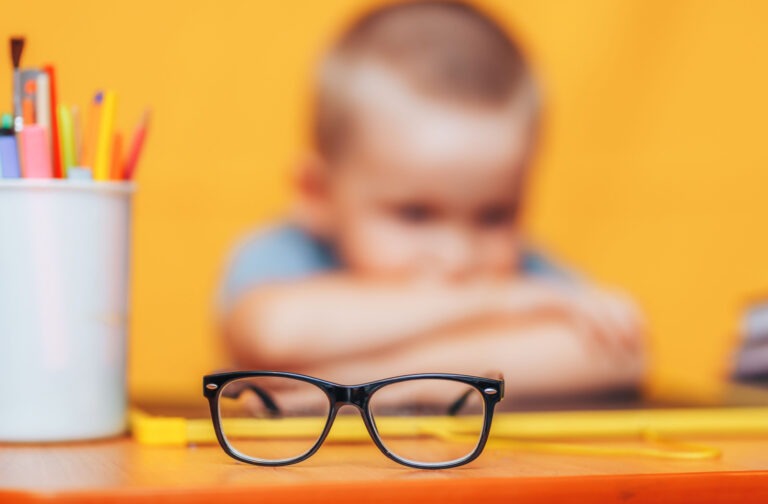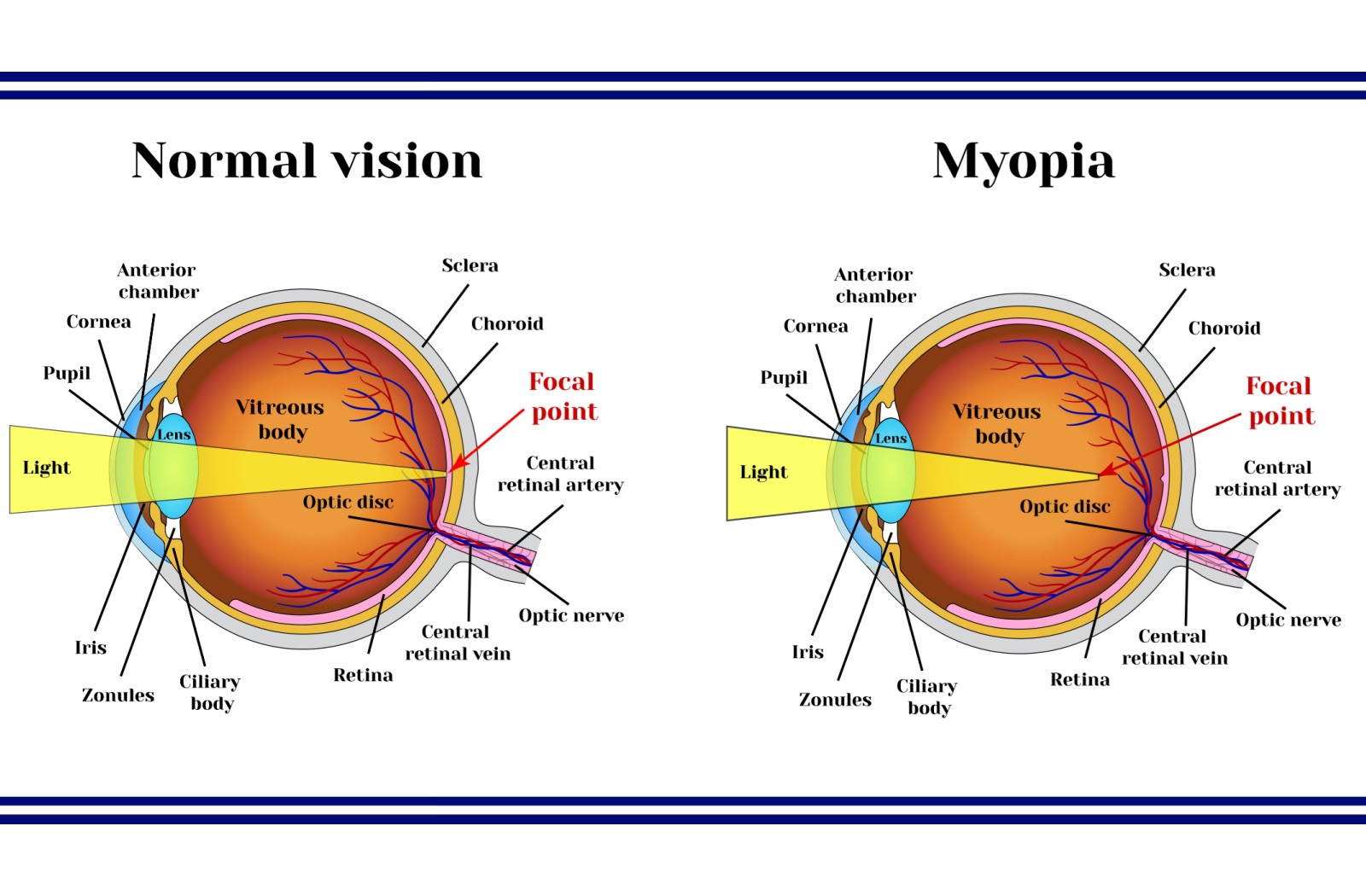First, let’s clarify what nearsightedness is exactly. The technical term for the condition that causes nearsightedness is myopia, which affects approximately 30% of Americans. People with myopia can see objects up close clearly, but things farther away appear blurry.
When your eye grows too long or your cornea is too curved, light that enters your eye may not focus directly on your retina, the sensor that sends images to the brain. Instead, the light falls short of the retina, making distant objects look hazy.
While you can’t go back in time or shorten your eye, there are ways to support good visual acuity with early intervention.

Can You Stop Nearsightedness Early?
As you age, it’s normal for myopia to worsen, especially in children and adolescents. High myopia can elevate your risk for developing severe eye diseases in adulthood, including:
Glaucoma
Cataracts
Myopic macular degeneration
Retinal detachment
As eyes elongate while children age, myopia can become stronger, but slowing its advancement is possible with certain lifestyle changes, habits, and preventive treatments.
How to Prevent Advancing Nearsightedness
Schedule Regular Eye Exams
Regular eye exams are crucial for maintaining good eye health and preventing the development of nearsightedness. A comprehensive eye exam can detect myopia at an early stage, allowing for prompt treatment and management. Using specialized equipment like a biometer, an eye doctor can determine the axial length of a person’s eyes to determine how they may be affected by myopia.
Additionally, regular eye exams provide an opportunity to monitor the progression of myopia over time and adjust treatment plans as needed.
Wear Updated Prescription Lenses
Wearing corrective lenses such as glasses or contact lenses can compensate for the elongated shape of the eye, improving visual clarity and reducing eye strain. However, it is crucial to keep the prescription up-to-date, as wearing outdated lenses can lead to headaches, blurry vision, and discomfort.
For children and adolescents who are at a higher risk of developing myopia, it is important to monitor their prescription regularly with annual eye exams. While wearing standard glasses and contacts doesn’t typically slow the progression of nearsightedness, it can help restore visual clarity for those with blurry vision caused by myopia.
Take Screen Breaks
Screens have made life easier in so many ways, and whether you play video games, binge-watch your favorite show, or work on a screen all day, taking breaks can be good for your eye health.
Some studies are beginning to reveal a relationship between myopia and screen time that shows spending long hours on electronic devices such as smartphones, computers, and tablets may contribute to the development and worsening of myopia.
Taking regular breaks from screen time, using the 20-20-20 rule, and engaging in outdoor activities or other distant vision exercises can help reduce eye strain and may help prevent the advancement of nearsightedness for children.
Work in Good Lighting with Proper Posture
Good lighting can benefit your eyes when you’re reading, studying, or working. Working in a well-lit area with sufficient lighting that doesn’t cause glare or shadows can help reduce eye strain.
Maintaining proper posture while working can reduce neck and back strain. Having an ergonomic workspace can make working more comfortable. Placing screens at a safe distance and adjusting the brightness and contrast settings can also reduce eye strain and promote healthy vision. Taking screen breaks and adopting healthy screen habits are critical steps in managing myopia and maintaining optimal eye health.

Seek Treatments & Strategies for Myopia Management
There are several options beyond glasses and standard contact lenses that can help children with myopia preserve their vision by preventing the progression of myopia.
Ortho-k (orthokeratology), atropine eye drops, and soft contact lenses are all potential solutions for myopia management we recommend for our patients. These forms of treatment and vision support can help slow the elongation of the eye to prevent myopia progression, and many of them can also provide clear vision.
Manage Nearsightedness Early at Specialty Eye
While there is no known cure for nearsightedness, there are several ways to improve vision and prevent myopia progression. By getting regular eye checkups, wearing glasses or contact lenses if needed, spending time outdoors, taking breaks from screens, and seeking other forms of myopia management, you and your family can take strides to preserve your vision and eye health.To get ahead of nearsightedness, schedule an appointment at Specialty Eye. Your family’s eyes are precious, and we can help you see the world clearly. With preventive care and proactive myopia management, you and your family can keep your eyes healthy to take in the vibrant world around you.

